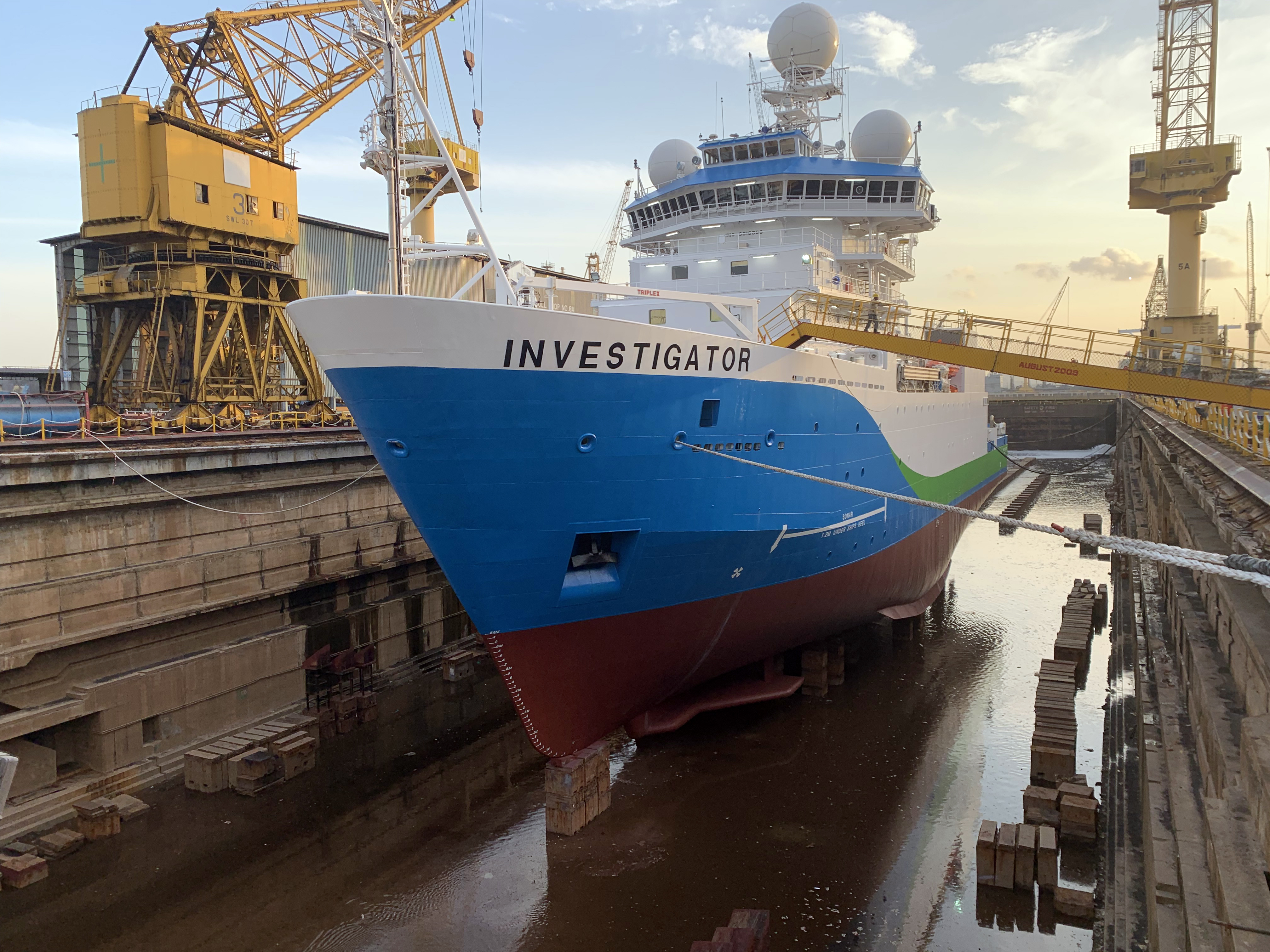
Where it is located
The gondola is located towards the bow of the vessel and sits 1.2 m below the hull. It is a hydrodynamically designed structure that's approximately 13 m long and 9 m wide.
What the gondola is used for
The gondola is used to mount advanced acoustic instruments including the vessel's three multibeam echosounders.
The gondola also contains the sub-bottom profiler which can map the sediments of the seabed and includes two 'swath mappers' to map the seafloor.
In addition, it contains a Skipper DL850 Doppler log which measures the speed of the ship through the water.
How it works
The gondola positions the ship's acoustic technology away from the hull and outside the 'bubble zone', which reduces any interference and ensures the highest quality of signal collection.
More about the ship's bow
RV Investigator's hull was analysed using computer-based fluid dynamics to ensure that the bubbles generated by the hull, and the pattern they formed sweeping down around the ship, wouldn't interfere with the acoustic equipment.
To ensure the ship created fewer bubbles, the bow was specially designed avoiding both the use of a bulbous-shaped bow and tunnel thrusters. This resulted in the design of RV Investigator incorporating a soft nose stem and retractable azimuthing (rotating) bow thruster, which is part of the dynamic positioning system for manoeuvring the vessel.
Where it is located
The gondola is located towards the bow of the vessel and sits 1.2 m below the hull. It is a hydrodynamically designed structure that's approximately 13 m long and 9 m wide.
What the gondola is used for
The gondola is used to mount advanced acoustic instruments including the vessel's three multibeam echosounders.
The gondola also contains the sub-bottom profiler which can map the sediments of the seabed and includes two 'swath mappers' to map the seafloor.
In addition, it contains a Skipper DL850 Doppler log which measures the speed of the ship through the water.
How it works
The gondola positions the ship's acoustic technology away from the hull and outside the 'bubble zone', which reduces any interference and ensures the highest quality of signal collection.
More about the ship's bow
RV Investigator's hull was analysed using computer-based fluid dynamics to ensure that the bubbles generated by the hull, and the pattern they formed sweeping down around the ship, wouldn't interfere with the acoustic equipment.
To ensure the ship created fewer bubbles, the bow was specially designed avoiding both the use of a bulbous-shaped bow and tunnel thrusters. This resulted in the design of RV Investigator incorporating a soft nose stem and retractable azimuthing (rotating) bow thruster, which is part of the dynamic positioning system for manoeuvring the vessel.
